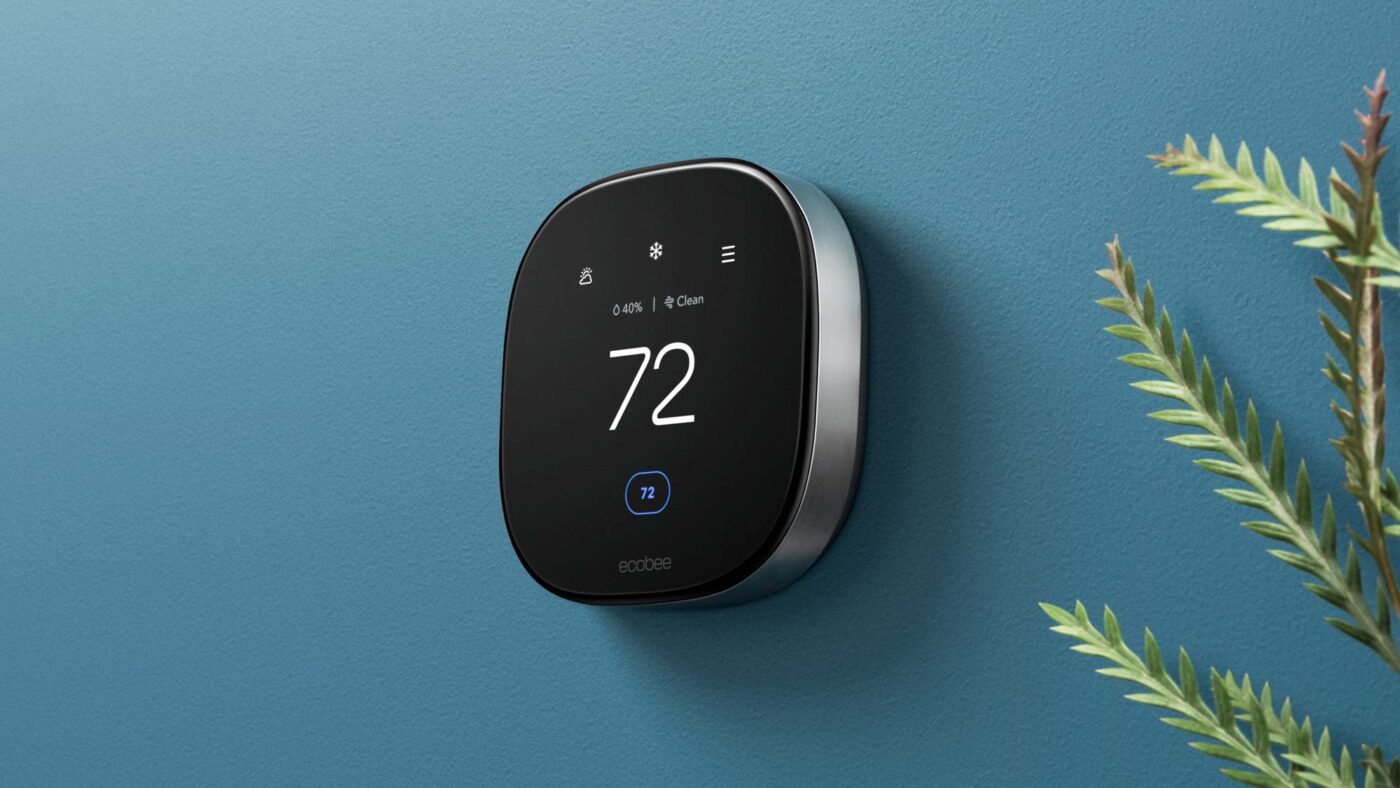Smart Thermostats: The Ultimate Guide for 2024
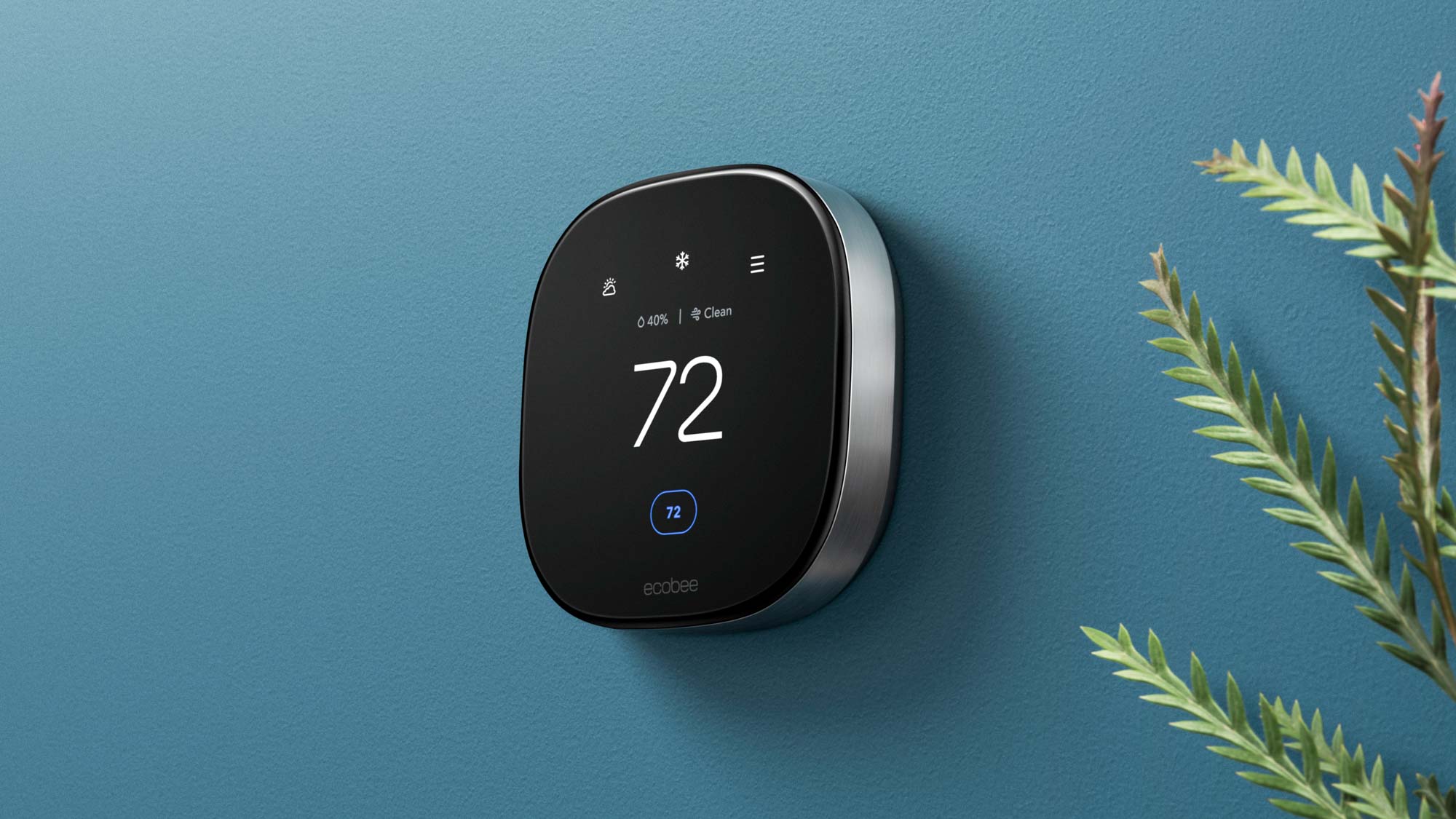
In today’s world, where energy efficiency and home automation are becoming increasingly important, smart thermostats are quickly becoming a must-have in modern homes. These devices allow you to take full control of your home’s climate from anywhere, offering convenience, cost savings, and the ability to create a more sustainable living environment. Whether you’re looking to upgrade your old thermostat or take your smart home to the next level, a smart thermostat can be a game-changer.
This guide will explore everything you need to know about smart thermostats, including their benefits, features, top models, and how they work. Let’s dive in!
What is a Smart Thermostat?
A smart thermostat is a device that automates the regulation of your home’s heating and cooling systems. Unlike traditional thermostats that only allow manual adjustments, smart thermostats can be controlled remotely via a smartphone, tablet, or voice assistant. They are designed to learn your behavior and adjust the temperature automatically to ensure comfort and energy savings.
Some of the key features of smart thermostats include:
- Remote Control: Control your thermostat from anywhere using a mobile app.
- Scheduling: Set schedules for when you want your heating or cooling systems to operate.
- Geofencing: The thermostat can detect when you’re approaching home and adjust the temperature accordingly.
- Energy Reports: Smart thermostats provide detailed reports on your energy usage, helping you track savings and efficiency.
- Voice Control: Integration with voice assistants like Amazon Alexa or Google Assistant for hands-free operation.
Why Should You Consider a Smart Thermostat?
1. Save Money on Energy Bills
One of the biggest advantages of installing a smart thermostat is the potential for significant energy savings. Smart thermostats are designed to optimize your heating and cooling usage, making sure that energy is not wasted when you’re not home or when you’re sleeping.
By learning your schedule, these devices can automatically lower the temperature when you’re away and adjust it before you return, preventing unnecessary heating or cooling costs. According to the U.S. Department of Energy, a smart thermostat can save you up to 10% per year on heating and cooling bills.
2. Improved Comfort
Smart thermostats ensure that your home is always at the optimal temperature. They monitor your usage patterns and can adjust settings to maintain comfort, so you never have to worry about coming home to a cold house in winter or a hot house in summer.
3. Convenience and Control
With remote access, smart thermostats allow you to control your home’s climate from anywhere. Whether you’re at work, on vacation, or in bed, you can change the temperature with the tap of a button. Mobile apps for smart thermostats make this functionality even easier to use.
4. Eco-Friendly Benefits
Reducing your home’s energy consumption means less carbon footprint. By using a smart thermostat to optimize your heating and cooling, you’re contributing to a more sustainable environment. Many models also provide detailed reports that allow you to track your energy usage and make better, more informed decisions about your energy consumption.
How Do Smart Thermostats Work?
Smart thermostats rely on Wi-Fi and sensors to function. Once installed and connected to your home’s heating and cooling system, you can control the thermostat remotely using a smartphone or tablet. The device uses sensors to detect the temperature in your home and make adjustments accordingly. Some advanced models even have learning algorithms that monitor your habits and adjust the temperature automatically.
Key Features of Smart Thermostats:
- Scheduling: Set times for your thermostat to adjust the temperature based on your daily routine.
- Geofencing: Smart thermostats use GPS to determine when you’re home or away, adjusting temperatures accordingly.
- Learning Capabilities: Over time, these devices learn your preferred temperatures and adjust themselves automatically.
- Energy Reports: They track energy usage and provide insights on how you can save on energy costs.
Top Smart Thermostats for 2024
Now that you know the basics of smart thermostats, let’s take a look at some of the top models available in 2024.
1. Nest Learning Thermostat (3rd Gen)
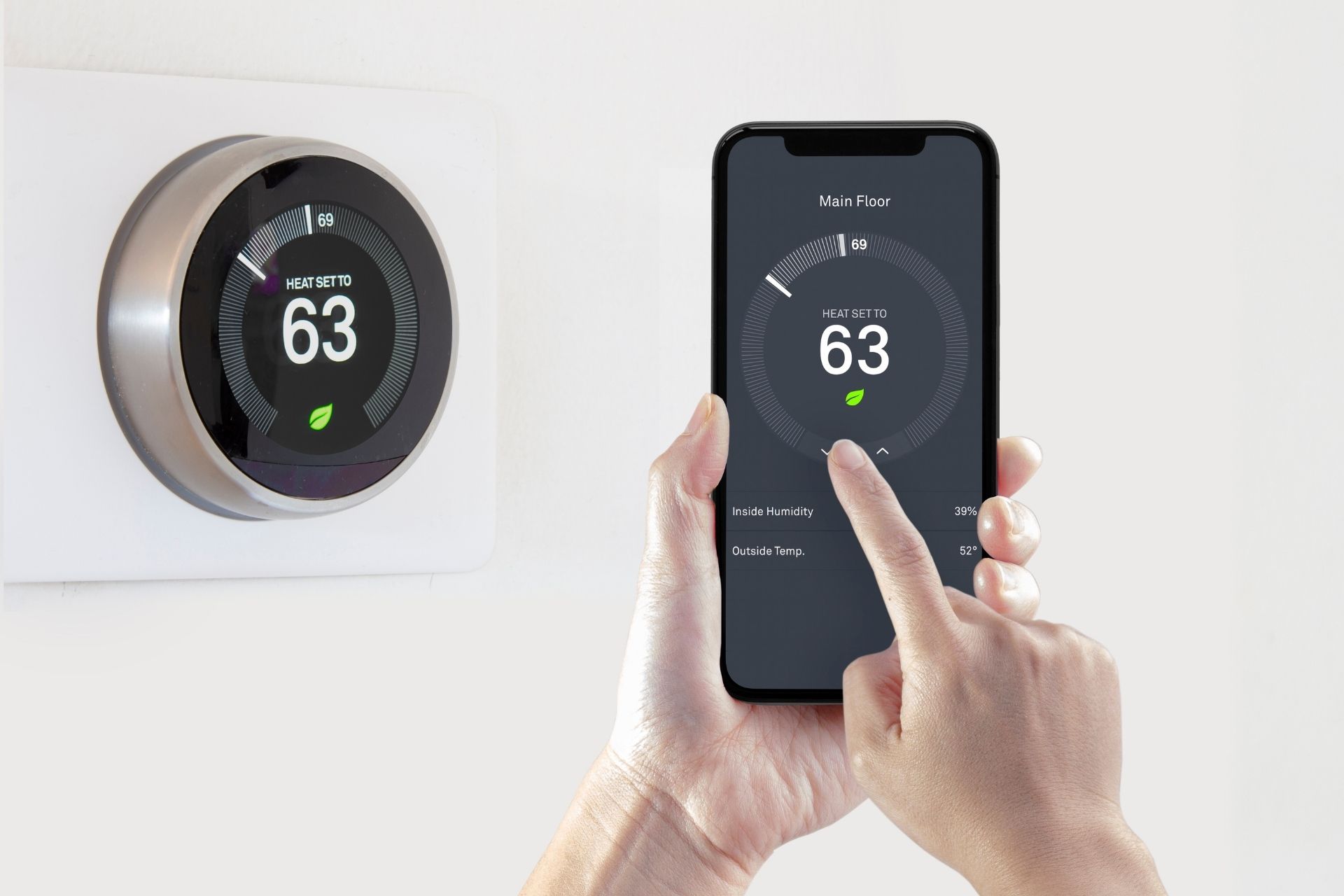
The Nest Learning Thermostat is one of the most popular models on the market. Known for its sleek design and advanced features, this thermostat is a favorite for homeowners looking for smart, energy-efficient solutions.
Features:
– Learning Capabilities: It learns your schedule and adjusts the temperature accordingly, ensuring comfort and efficiency.
– Remote Control: Use the Google Home app to control your thermostat from anywhere.
– Energy History: View your energy usage history and receive tips on how to save.
– Compatibility: Works with most home heating and cooling systems.
Pros:
– Easy to install and use.
– Beautiful, modern design.
– Energy-efficient and eco-friendly.
Cons:
– Higher price point.
– Requires a Google account to use full features.
Explore Nest Learning Thermostat.
2. Ecobee SmartThermostat with Voice Control
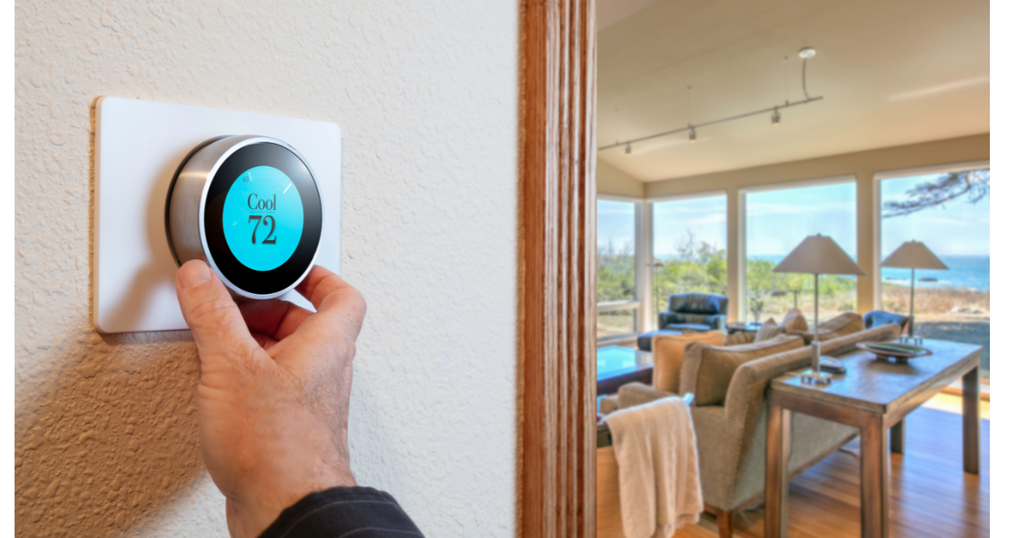
Ecobee is another highly-rated smart thermostat brand. This particular model offers more than just temperature control—it doubles as a voice assistant. With built-in Amazon Alexa, you can control your thermostat and other smart home devices using voice commands.
Features:
– Alexa Built-In: Use voice commands to adjust the temperature or control other smart devices in your home.
– Room Sensors: The Ecobee SmartThermostat comes with sensors that monitor temperature and occupancy in multiple rooms, optimizing comfort throughout the house.
– Remote Control: Control your thermostat from anywhere with the Ecobee app.
– Energy Reports: Get monthly energy reports to track savings and efficiency.
Pros:
– Voice control with Alexa integration.
– Comes with room sensors for better control.
– Excellent mobile app interface.
Cons:
– More expensive than basic models.
– Room sensors require additional setup.
Check out Ecobee SmartThermostat.
3. Honeywell Home T9 Smart Thermostat
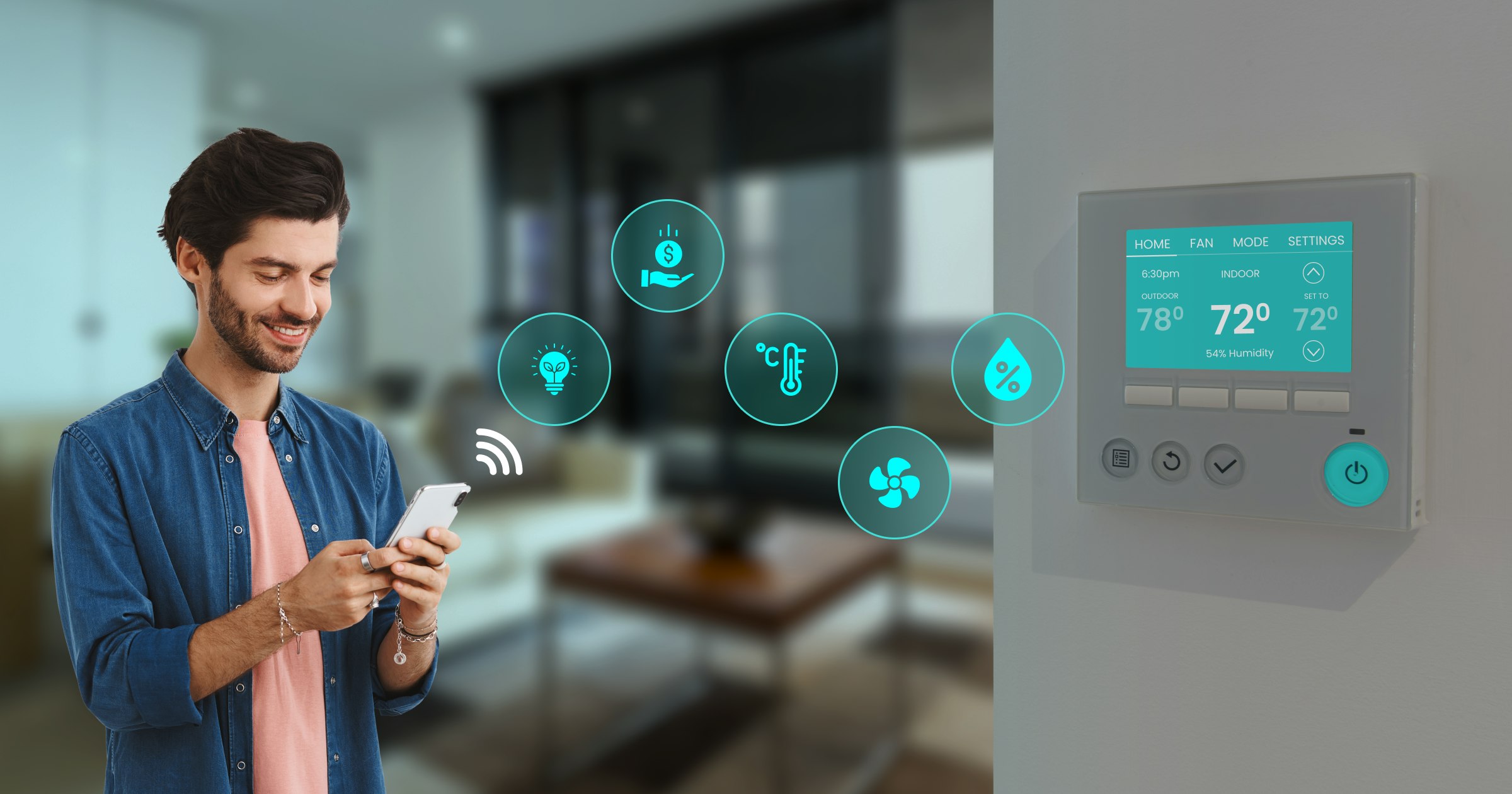
Honeywell is a household name when it comes to thermostats, and the T9 Smart Thermostat continues that legacy with advanced features designed to improve comfort and efficiency in your home.
Features:
– Smart Room Sensors: Use sensors to detect occupancy and adjust temperatures in multiple rooms.
– Geofencing: The thermostat can adjust the temperature when you leave or return home, saving energy while you’re away.
– Voice Control: Compatible with Amazon Alexa and Google Assistant for hands-free control.
– Scheduling: Set up daily schedules to ensure your home stays comfortable at all times.
Pros:
– Great for multi-room homes with the use of room sensors.
– Energy-saving features like geofencing.
– Easy-to-use app and installation.
Cons:
– Room sensors may need additional purchases for optimal use.
– Lacks some of the advanced learning features of other models.
Discover Honeywell T9 Smart Thermostat.
How to Choose the Right Smart Thermostat for Your Home
When selecting a smart thermostat, consider the following factors:
1. Compatibility
Ensure that the thermostat is compatible with your existing heating and cooling system. Some models, like Nest, work with a wide variety of systems, while others may have more specific requirements.
2. Energy Savings
Look for thermostats that offer energy-saving features such as learning capabilities, geofencing, and energy usage reports. These features will help you optimize your home’s energy consumption and lower your bills.
3. Budget
Smart thermostats come in a range of prices, from basic models to high-end devices with advanced features. Choose a thermostat that fits your budget while offering the features you need.
4. Smart Home Integration
If you have other smart home devices, ensure the thermostat is compatible with them. Some thermostats integrate seamlessly with voice assistants like Alexa and Google Assistant, while others support smart lights, locks, and more.
FAQs About Smart Thermostats
Q1: Can I install a smart thermostat myself?
A1: Yes, most smart thermostats are designed for DIY installation. However, if you’re uncomfortable with electrical wiring, it’s best to consult a professional.
Q2: Do smart thermostats work with all HVAC systems?
A2: Most smart thermostats are compatible with common HVAC systems, but it’s essential to check compatibility before purchasing. Some systems, like heat pumps or multi-stage systems, may require a specific model.
**Q3: Are smart thermostats
worth the investment?**
A3: Yes, the long-term energy savings and comfort offered by a smart thermostat make it a worthwhile investment. On average, you can save 10-15% on heating and cooling bills each year.
Q4: Can I control a smart thermostat with my smartphone?
A4: Yes, most smart thermostats come with mobile apps that allow you to control the temperature remotely.
Conclusion
Investing in a smart thermostat is a smart choice for those who want to enhance their home’s comfort, reduce energy costs, and embrace the future of home automation. Whether you choose a Nest, Ecobee, or Honeywell model, you’ll enjoy advanced features like remote control, energy-saving capabilities, and seamless integration with your smart home.
Choose the thermostat that best fits your needs and enjoy a smarter, more energy-efficient home.

